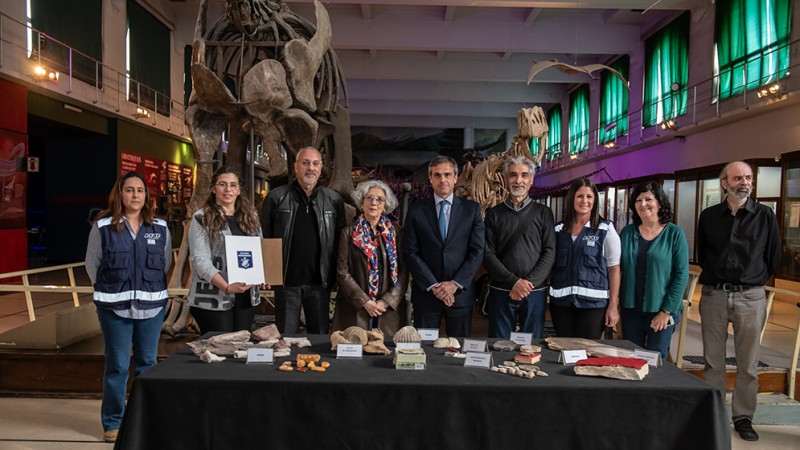More than 6,400 specimens, including the world's oldest daisy flower fossil and a complete duck-billed dinosaur skeleton, were officially handed over to the Río Negro Province on Tuesday, three years after they were smuggled into Spain in September 2020.
The trafficked fossils were part of the extensive collection of the now-shuttered Museum of Paleontology located in San Carlos de Bariloche in the province of Rio Negro. The museum, which was founded in the 1990s, has been closed since 2019.
Authorities say Rodolfo Pedro Corsolini, the museum’s director, was responsible for illegally shipping the paleontological collection to Spain. Corsolini reportedly requested permission from the Secretariat of Culture of Rio Negro to take the pieces out of the country in April 2020, but was denied. After the refusal, neighbors of the museum noticed unusual activities at the closed museum. By the time the customs authorities were informed, the fossils were gone.
Corsolini's son, Julián, was also charged in this case. He told police that the owner of the cargo was his father, but that he, Julian, had signed shipping documents for the container carrying the fossils because he was traveling to Spain. Both father and son face up to eight years in prison if convicted; the status of the prosecution against them was unclear.
When the cargo arrived at the Port of Valencia, Spain, customs authorities reported that the fossils were hidden among stones of different sizes, shapes, and colors, in order to evade customs controls and to make them appear to be remains with no paleontological value.
The fossils were returned to Argentina by Spain, where they resided for three years at the Argentine Museum of Natural Sciences while scientists and experts certified their authenticity.
Among the fossils recovered are the world's oldest daisy flower, 47 million years old; the complete skeleton of a hadrosaur or duck-billed dinosaur; dinosaur eggs; multiple million-year-old pieces of amber with insects preserved inside; and an ammonite, an extinct marine mollusk, that is more than 20 centimeters in diameter. Some fossils are believed to have come from other countries.
According to Spanish authorities, the dinosaur eggs alone could have a black market value of more than US$160,000.
At the official handover ceremony, the Director of Customs of Argentina said, "This is the largest seizure of cultural property in the history of Argentina and we are proud to be able to return our heritage to its place of origin. I am extremely grateful for the collaboration of the Museum, INAPL, and the Spanish Customs, which have been decisive in the recovery of the pieces."



